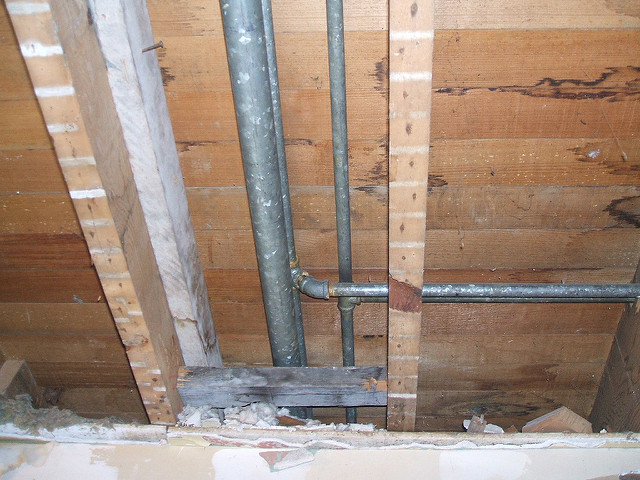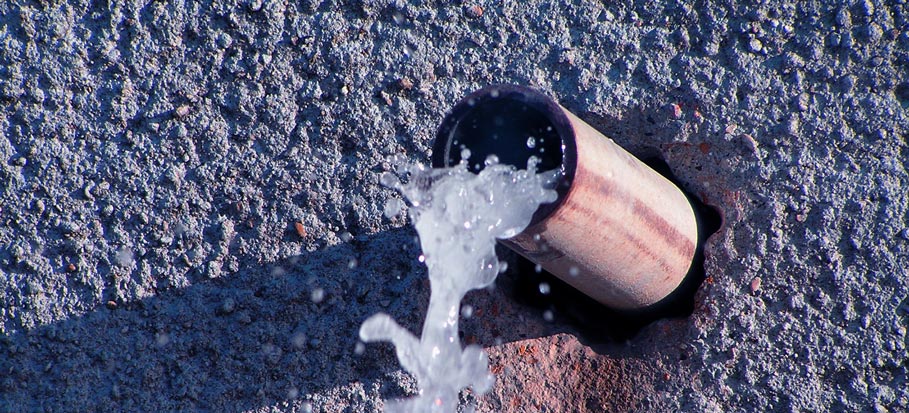6 Ways to Locate Concealed Water Leaks in Your House
6 Ways to Locate Concealed Water Leaks in Your House
Blog Article
We've stumbled on the article relating to Locating water leaks below on the web and figured it made sense to discuss it with you on my blog.

The moment you locate a leak, calling your plumber for repair work is the most effective remedy. Some small water leaks might not be noticeable. If you can not discover it with your naked eyes, below are some hacks that aid.
Early detection of dripping water lines can mitigate a possible disaster. In addition to saving you money, it will decrease the worry and also frustration.
Check Water Consumption
Analyze your water bills and also track your water intake. As the one paying it, you must observe if there are any inconsistencies. If you spot sudden changes, despite your usage being the same, it suggests that you have leakages in your plumbing system. Keep in mind, your water bill should fall under the same range every month. A sudden spike in your bill shows a fast-moving leak.
A stable rise every month, also with the exact same behaviors, reveals you have a slow-moving leakage that's additionally slowly intensifying. Call a plumber to extensively check your building, specifically if you really feel a warm location on your flooring with piping beneath.
Examine the circumstance and evaluate
House owners must make it a practice to examine under the sink counters as well as even inside closets for any type of bad odor or mold and mildew growth. These two warnings indicate a leakage so timely interest is required. Doing regular evaluations, even bi-annually, can conserve you from a major trouble.
Take A Look At the Water Meter
Inspecting it is a proven means that helps you find leaks. If it relocates, that shows a fast-moving leak. This indicates you might have a slow leak that might also be below ground.
Asses Outside Lines
Do not forget to check your outside water lines as well. Examination faucets by affixing a yard tube. Needs to water seep out of the connection, you have a loose rubber gasket. Replace this as well as make sure all links are limited. It will help get it expertly took a look at and also kept each year if you have actually obtained a lawn sprinkler system. One small leak can squander tons of water and surge your water expense.
Do a Food Coloring Examination
When it comes to water intake, 30% comes from bathrooms. If the shade in some way infiltrates your bowl during that time without flushing, there's a leak between the tank as well as bowl.
Inspect for stainings as well as weakening as many devices and pipes have a life expectations. If you believe leaking water lines in your plumbing system, don't wait for it to intensify.
The minute you locate a leak, calling your plumber for repair work is the finest solution. Some small water leakages might not be visible. Checking it is a guaranteed method that aids you uncover leakages. One tiny leak can squander heaps of water and also increase your water bill.
If you suspect dripping water lines in your plumbing system, do not wait for it to rise.
5 SMART WAYS TO FIND HIDDEN WATER LEAKS WITHOUT DESTROYING YOUR HOUSE
Monitor Your Water Meter
If you start to notice a higher water bill but you know that your water usage hasn’t increased, it’s a good sign that there’s a leak. Keep a close eye on your water meter to see if you detect any huge fluctuations.
While you’re outside, make sure that there is no water source accidentally left turned on such as a garden hose. Turn all water off including inside water before you check the meter.
Next, take a closer look at the leak indicator and look for any movement. It depends on the type meter you have but for many, it’s a triangular-shaped dial. It may also look like a small silver wheel that spins when water flows through it.
If either of these types of dials is turning after you’ve turned the water off, you likely have a leak. Another option is to take a reading and then wait an hour or two.
Take a second water meter reading to see if anything has changed. This is how to detect water leaks for most of your home. Just make sure you haven’t used any water during that hour to a two-hour window.
Check Your Faucets
For many homeowners, the source of a water leak stems from the faucets. A worn rubber washer is often the culprit and can be found underneath the handle.
You can easily replace the washer if you have the correct tools. You will need to turn the water off under the sink, or at the main cutoff valve.
Next, remove the faucet handles to access the gasket. Most home improvement or hardware stores sell replacement gaskets and the tools you need to fix this simple, common problem.
How to Detect Water Leaks from Your Toilet
The toilet is another common culprit for water leaks, and it can often go unnoticed. A leaky toilet can waste several hundred gallons of water, which also means it can waste quite a bit of money.
Remove your tank lid and add a few drops of food coloring to the tank. Dye tabs are another easy alternative that can be purchased at many hardware stores.
Let the coloring saturate the water and wait approximately 30 minutes without flushing. If any color has come through the tank and into the toilet bowl, you likely have a leak.
Luckily, these types of leaks can often be resolved by replacing the flapper. The flapper has likely just worn out over time or become cracked which causes water to constantly flow from the tank into the bowl without you even noticing.
Another toilet-related red flag? If you need to jiggle the handle to keep your toilet from running, you likely have an issue with the flush bar and chain sticking.
You can fix this by adjusting the nut that secures this mechanism inside the tank. Or, you might need to replace the handle since it could be sticking.
Be Aware of Underground Water Leaks
Outdoor water leaks can get quite expensive to repair, so it’s important to know what to look for. If an area of your yard seems softer than others or you notice dark spots, this could be cause for concern.
If one particular area around your home seems to stay wet even after a dry spell, this is a red flag. You can also look closely near your driveway and street and see if you notice any unusual water flow.
Water flow doesn’t have to be a constant stream of flowing water. Even puddles that seem out of place may indicate that there’s a deep, underground leak.
If you suspect that you have an underground leak, call your local water or utility company as soon as possible. They have the tools and the know-how to further diagnose and fix the issue.

I came across that entry on Leaking water lines while exploring the search engines. Enjoyed our content? Please share it. Help somebody else discover it. Thank you so much for going through it.
Report this page